#specifically to jmu
Text

Researchers create stable superconductor enhanced by magnetism
An international team including researchers from the University of Würzburg has succeeded in creating a special state of superconductivity. This discovery could advance the development of quantum computers. The results are published in Nature Physics.
Superconductors are materials that can conduct electricity without electrical resistance—making them the ideal base material for electronic components in MRI machines, magnetic levitation trains and even particle accelerators. However, conventional superconductors are easily disturbed by magnetism. An international group of researchers has now succeeded in building a hybrid device consisting of a stable proximitized-superconductor enhanced by magnetism and whose function can be specifically controlled.
They combined the superconductor with a special semiconductor material known as a topological insulator. "Topological insulators are materials that conduct electricity on their surface but not inside. This is due to their unique topological structure, i.e., the special arrangement of the electrons," explains Professor Charles Gould, a physicist at the Institute for Topological Insulators at the University of Würzburg (JMU). "The exciting thing is that we can equip topological insulators with magnetic atoms so that they can be controlled by a magnet."
Read more.
#Materials Science#Science#Superconductivity#Superconductors#Topological insulators#University of Würzburg#Magnetism
14 notes
·
View notes
Text
James Madison Dukes Mascot SVG - JMU Football Bowling Dukes SVG PNG, Cricut File
James Madison Dukes Mascot SVG, JMU Football Bowling Dukes SVG PNG EPS DXF PDF, Cricut File, Instant Download File, Cricut File Silhouette Art, Logo Design, Designs For Shirts.
♥ Welcome to SVG OCEAN DESIGNS Store! ♥
► PLEASE NOTE:
– Since this item is digital, no physical product will be sent to you.
– Your files will be ready to download immediately after your purchase. Once payment has been completed, SVG Ocean Designs will send you an email letting you know your File is ready for Download. You may also check your Order/Purchase History on SVG Ocean Designs website and it should be available for download there as well.
– Please make sure you have the right software required and knowledge to use this graphic before making your purchase.
– Due to monitor differences and your printer settings, the actual colors of your printed product may vary slightly.
– Due to the digital nature of this listing, there are “no refunds or exchanges”.
– If you have a specific Design you would like made, just message me! I will be more than glad to create a Custom Oder for you.
► YOU RECEIVE: This listing includes a zip file with the following formats:
– SVG File (check your software to confirm it is compatible with your machine): Includes wording in both white and black (SVG only). Other files are black wording.
– PNG File: PNG High Resolution 300 dpi Clipart (transparent background – resize smaller and slightly larger without loss of quality).
– DXF: high resolution, perfect for print and many more.
– EPS: high resolution, perfect for print, Design and many more.
► USAGE:
– Can be used with Cricut Design Space, Silhouette Cameo, Silhouette Studio, Adobe Illustrator, ...and any other software or machines that work with SVG/PNG files. Please make sure your machine and software are compatible before purchasing.
– You can edit, resize and change colors in any vector or cutting software like Inkscape, Adobe illustrator, Cricut design space, etc. SVG cut files are perfect for all your DIY projects or handmade business Product. You can use them for T-shirts, scrapbooks, wall vinyls, stickers, invitations cards, web and more!!! Perfect for T-shirts, iron-ons, mugs, printables, card making, scrapbooking, etc.
►TERMS OF USE:
– NO refunds on digital products. Please contact me if you experience any problems with the purchase.
– Watermark and wood background won’t be shown in the downloaded files.
– Please DO NOT resell, distribute, share, copy, or reproduce my designs.
– Customer service and satisfaction is our top priority. If you have any questions before placing orders, please contact with us via email "[email protected]".
– New products and latest trends =>> Click Here .
Thank you so much for visiting our store!
SVG OCEAN DESIGNS
Read the full article
0 notes
Text
#song of the day 2020#sons of the east#folk#have some music that would be really great for a montage#or a car ride#specifically to jmu#it would be a perfect song to accompany that car ride
1 note
·
View note
Photo


Two recent puppy commissions that I am very happy with.
Left: Bosko, a lab mix (the specifically requested the hibiscus which I love)
Right: Casey, a beautiful blue-grey pitty (They wanted JMU school colors so I went with the lovely purple lupine as it’s one of my favorite flowers and I’ve been dying to do it)
Commissions are still open on pet portraits--I’ll do any thing from a horse to a tarantula.
7 notes
·
View notes
Text
Shay Williams - Readerly Exploration 1 - February 8th, 2019
The assigned reading for class on February 8th, 2019 was the article, “Advanced readers in reading first classrooms: Who was really ‘left behind’? Considerations for the field of gifted education” written by and with contributions from Catherine M. Brighton, Tonya R. Moon, and Francis H.L. Huang.
Big take-away:
This was such a fascinating read! I often devote most of my attention to the details and many facets of special education, so to study, learn about, and explore gifted education was enlightening in such a thought-provoking and productive way. This study revolves around looking at the progress student participants made through the Kindergarten to second grade years. Its contributors looked intentionally and carefully at three varying and unique groups of students who received “reading first” (RF) literacy instruction: 1) students who were above grade level/advanced learners, 2) on level learners, and 3) learners who needed more support. Two research questions in particular drove this study: 1) How did the reading growth of a cohort of advanced primary-grade readers compare with a cohort of average-ability readers and a cohort of struggling readers from kindergarten through second grade in RF schools? and 2) How did teachers in RF schools address the needs of their advanced learners? (Brighton, 2015, 252). Results that were found implied that a difference between the advanced group and group that needed additional support was 41 points (Brighton, 2015, 270). While this is to say that influences took place, the authors also articulated that a variety of themes occurred several times throughout the study process, which included advanced learners feeling limited in their learning.
Nugget:
What stood out to me the most in this reading was the significance of necessity of the following quote: “Consequently, it became clear that advanced readers’ needs were considered as an afterthought, if considered at all” (Brighton, 2015, 277). I think this is a very convicting and powerful statement that sheds light and attention onto the need for all students’ needs to be recognized, addressed, and provided for. There is a common thought to dismiss the needs of students who are gifted because “they will be fine on their own”; we must counteract this thought and serve as ambassadors for all students of all abilities, gifts, and talents. This quote resonated deeply within my heart because students in gifted education deserve attention and care in a way that mirrors the way that students in special education deserve attention and care as well. We must be quick to be intentional with our students as opposed to dismissive.
Readerly exploration:
For my readerly exploration, I decided to choose the habit of exploring relationships with others through reading by using texts as a shared experience with another person in order to gain insight into their perspective. Here, I discussed this article with a dear friend of mine who is studying education at James Madison University in Virginia, Erica. She had expressed to me in the past that she is pursuing a career specifically in the field of gifted education, so we have had a lot to talk about! Here are her thoughts on advanced learners receiving literacy instruction, and how they deserve to be treated:
“To me advanced reading was frustrating because I was required to read a certain number of books and didn’t want to. I will say what I have seen in the classroom as a sub, typically kids who enjoy reading are great about taking tests (especially when they get to middle school and there are programs like Reading Olympics), but kids who are below level (and don’t have easy or frequent access to books they enjoy) it is an annoyance because it is hard. AS far as advanced students, I don’t think teachers should just throw books at them and expect that to satisfy their desire for knowledge, at least it didn’t work for me, but I think projects of interest were good, because I was researching, reading, and writing and I didn’t think of it as reading, but instead a fun assignment!”
~Erica, Elementary Education student, JMU ‘20
Multimedia:

1 note
·
View note
Photo
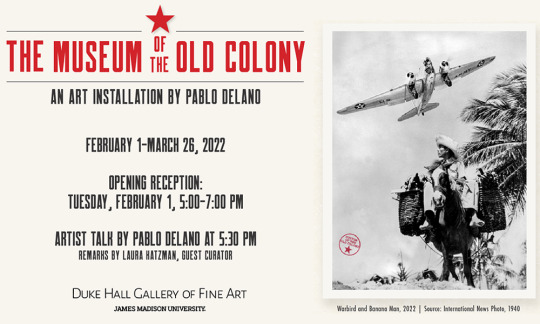
S E X Y P I N K
EXHIBITION | TOMORROW
The Museum of the Old Colony: an art installation by Pablo Delano
Feb. 1-March 26, 2022
Opening reception: Tuesday, Feb. 1, 5-7 p.m. Duke Hall Gallery of Fine Art
Artist’s talk by Pablo Delano at 5:30 p.m. with remarks by Dr. Laura Katzman, guest curator
Public Event: Film screening and panel discussion on Wednesday, Feb. 23, 5:30-8 p.m. in the Duke Gallery Courtyard
The Museum of the Old Colony is an ongoing, site-specific, conceptual art installation by visual artist Pablo Delano that studies how everyday objects, imagery and film have shaped misperceptions of Puerto Rico after the Spanish-American War of 1898, when it was seized by the United States military from Spain as a "possession." The exhibition will open at James Madison University’s Duke Hall Gallery of Fine Art on Feb. 1, 5-7 p.m., with remarks by guest curator Laura Katzman and an artist’s talk by Delano.
With dry wit and sardonic humor, the exhibition confronts the stereotypes of Puerto Rico spread by mainstream media over the past 124 years; the relationship between U.S. imperial power and the island-nation; and the lasting and devastating legacies of colonial rule.
The gallery will host a film screening and panel discussion on Wednesday, Feb. 23, 5:30-8 p.m. in the Duke Gallery Courtyard. Cecilia Aldarondo’s award-winning documentary Landfall is about the aftermath of Hurricane Maria in Puerto Rico. Panelists will include: Taína Caragol (Smithsonian National Portrait Gallery); Nefin Dinc (SMAD/JMU); Ángel Garcia (Geology/JMU); Amanda Guzmán (Trinity College); and Marianne Ramírez Aponte (Museum of Contemporary Art, Puerto Rico).
Delano was born in Puerto Rico and holds a B.F.A. from Tyler School of Art/Temple University and an M.F.A. from Yale University, both in painting. He has taught at Trinity College in Hartford, Conn. since 1996, producing a book of black and white photographs, In Trinidad, documenting the nation’s post-colonial nation building, while collecting the archival images and artifacts that would ultimately grow into The Museum of the Old Colony. In 2019, Delano was appointed Charles A. Dana Professor of Fine Arts. http://www.pablodelano.com/
Katzman is a JMU art history professor who specializes in documentary photography on the U.S. continent and in Puerto Rico during the New Deal and post-World War II eras. She is the editor and an essayist for this installation’s catalogue, which will include essays by noted scholars, including Gallery Director Dr. Beth Hinderliter, a foreword by Marianne Ramírez Aponte (Museum of Contemporary Art of Puerto Rico), and an extensive interview with the artist. https://www.upress.virginia.edu/title/5885
The Museum of the Old Colony lives in the permanent collection of the Museum of Contemporary Art of Puerto Rico | Museo de Arte Contemporáneo de Puerto Rico and has traveled around the world. http://museumoftheoldcolony.org/
Contact Beth Hinderliter at (540) 568-6407 or by email at [email protected] for more information or to schedule a group visit.
###
Gallery information:
The gallery is free to all guests. Please contact the gallery for groups larger than 25. Visit jmu.edu/dukehallgallery for location, hours and parking information.
Duke Hall Gallery of Fine Art’s mission is to present the highest level of fine art experiences and to create an active space for robust discourse of vital issues facing our society. It is a space where the local and academic community share ideas about contemporary art and our wider cultural experiences. Art breaks barriers between languages and brings us together to be inspired and knowledgeable citizens, no matter where we come from.
#sexypink/Puerto Rican Art shows#sexypink/Old Colony#sexypink/Museum of Contemporary Art Puerto Rico#tumblr/MCAPR/Museum of Contemporary Art Puerto Rico#Pablo Delano#history#art#Puerto Rico#Museum of Contemporary Art Puerto Rico#installation
0 notes
Link
Alyssa Reid and Kathryn Lese met nearly a decade ago at James Madison University (JMU). At the time, Reid was a faculty member of the School of Communications Studies, where she taught a speech class attended by Lese.
The two became best friends, and after Lese graduated from JMU and became a graduate teacher for the speech and debate team, she and Reid became a couple. Reason’s Robby Soave reported that Reid was initially reluctant to date Lese, fearful it would ruin their friendship, but the two eventually started a relationship.
“When she first told me that she had feelings for me, I immediately told her that we can’t be in a relationship,” Reid told Reason. “But she was very persistent and eventually it just became a reality after time.”
Two-and-a-half years later, the two went through a bad breakup. Both were hurt, but Reid said that Lese tried to ruin her life after the breakup.
Nearly a year after the breakup, Lese filed a complaint with JMU’s Title IX office, the details of which were never made clear to Reid, even though that complaint led to an investigation and punishment. The complaint basically accused Reid of having a nonconsensual relationship with Lese for more than two years.
…
Reid was suspended from teaching and eventually found to have violated a portion of JMU’s sexual misconduct policy that didn’t exist at the time she was in a relationship with Lese. During the investigation, Reid was told to prepare a defense without being told the specific charges against her. She was also asked to find witnesses to corroborate her side of the story, again without specifics. Reid was eventually given Lese’s exact statement, but only after her witnesses were interviewed, according to her lawsuit.
Ahead of the hearing, Reid was told she would have to write down her questions for Lese and give them to the hearing’s chair, who would then decide which questions to ask of Lese. But neither Lese nor her witnesses attended the hearing, so Reid couldn’t cross-examine them.
Such is the norm in college adjudication of sexual misconduct. Accusers are not required to attend the hearing and are therefore able to avoid being questioned about their claims, without anything held against them. Evidence that could likely be obtained by the defense is simply not heard and no one cares.
If the accused refuses to attend the hearing, however, it is almost certainly held against them and their lack of defense is used to find them responsible. That is because schools don’t operate like a typical legal system, where the accuser has to prove the evidence against the accused. In college adjudications, the accused must find overwhelming evidence to prove their innocence, without the accuser having to provide anything but their claims.
For Reid, the inability to question Lese or her witnesses resulted in a finding of responsibility. Reid was not fired, but she was denied the ability to apply for a promotion. She found a job at another school, but when her new employer found out about the accusation, the offer was rescinded.
As Reason noted, the accusations and finding against Reid are especially confusing because her relationship with Lese had already been investigated and found to be consensual. While they were dating, an unnamed person at JMU filed a complaint about the couple. JMU investigated and determined that Reid and Lese were colleagues and two consenting adults allowed to date. There was no teacher/student or supervisor/employee issue.
Yet years later, the university reversed its decision and determined that Reid and Lese’s entire relationship was nonconsensual.
0 notes
Text
In What Cases Would You Want to No-Index a Page but Has the Googlebot Follow the Links?
Sirris
A few questions…
If I use x-robot tag in the HTTP header and I noindex a page, do I need to specify a follow or nofollow? Meaning does this default to follow?
Also, in what cases would you want to noindex a page but has the googlebot follow the links? What's the benefit of doing that if the page passing link equity isn't indexed?
Maybe I'm missing something here but I can't image a case where you'd de-index something and leave bots to follow the links.
It's one of those days…
2 👍🏽 2
[filtered from 26 💬🗨]📰👈

🔗🏹
💬🗨
Martinez
Google has said they'll convert a "noindex" to a "nofollow" for the page.
ADDED ON EDIT: Specifically, John Mueller said in a 2017 Webmaster hangout that after the noindexed page is completely dropped from the index there is nothing to follow. If you create a page with "noindex" it won't be included in the index for any length of time - so then there is nothing to follow from the beginning.
Bauer
actually what they (JMu) said was that the links would be followed until the page actually drops out of the index, in which case the links would no longer be discoverable.
in other words, "There's no really big difference there in the long run."
and how long until that happens?
"it depends" of course…
see this for more discussion:
https://www.webmasterworld.com/Google/4881752.htm
Martinez » Bauer
It doesn't depend in this case. Once the page is removed from the index (and he did say there would be a delay) then there is nothing to follow.
No one should assume that "noindex,follow" will work for very long.
Martinez
And *IF* the page is never indexed in the first place then the links will never be followed. So creating pages for the sake of linking/crawling with a "noindex" is a waste of time and resources. The pages will be crawled, Google will see the "noindex", and that will be that.
Bauer » Martinez
I' not sure if you agree with me or not.
i'm merely reporting what i've read.
i'm pretty sure i reported it accurately.
Martinez » Bauer
You clarified the point I made by pointing to a video where John says that if they see "noindex,follow" they might follow the links for an unspecified time but once the page drops out of the index there is nothing to follow.
I conceded that point and corrected my original comment.
But I also pointed out that if someone creates a page with "noindex,follow" from the start - Google won't index it and therefore it won't follow the links.
So, to answer the question posed above, I would only do this when transitioning from one URL format to another on a site where I could not for some reason set up redirects (and that's a very rare hosting situation).
Sirris » Michael
So to sum up,
- NoIndex, also means nofollow in due time.
- NoIndex, follow will drop to nofollow once the page is de-indexed.
- Not specifying a follow tag on a page will automatically default to follow, if the existing directive is to index the page.
Which hosting situations would you do the above?
So why even NoIndex a page ever? Why not 404 or 301 the page? Is it to save "link equity"? But in that case NoIndexing a page will stop passing back link equity over time.
Martinez » Sirris
"Which hosting situations would you do the above?"
There are still a few very, very old platforms out there. I'm not even sure if they are taking on new customers. I've advized a few old acquaintances on ways to get their content off those platforms. I seriously doubt anyone in their right mind would try to get onto them.
Sirris » Michael
This seems to do a good job covering the topic.
I'm just confused why you would want to NoIndex and Disallow a page if it wasn't a staging section or private content.
Like if I published 1000 blog posts, why NoIndex, NoFollow. Why not 404 or 301 redirect those page?
Also, why would anyone just disallow a page. That still allows the page to potentially be indexed in search results?
https://www.matthewedgar.net/noindex-vs-nofollow-vs-disallow/
Noindex vs Nofollow vs Disallow Commands | Matthew Edgar
Martinez
This page explains how Google handles "noindex".
Looking at what people have done on their sites doesn't tell you the story. The TripAdvisor SiteIndex page doesn't appear to be in Google's index, but if any pages it links to are indexed that doesn't mean Google follows the links on the SiteIndex page.
And you cannot use 3rd-party link research tools to determine which links Google knows about.
https://support.google.com/webmasters/answer/93710?hl=en
Block search indexing with 'noindex' - Search Console Help
📰👈

🔗🏹
Read another article: Thoughts on No Indexing Tag and Category Pages for Blogs
0 notes
Text
the love of my life is lee harvey oswald but specifically in assassins but specifically in the JMU production of it
#I’m thinking magnolias for the wedding but i also think tulips would be really pretty#wishing he would search and frisk me like that😔
0 notes
Text
Venus Flytraps Have Magnetic Fields Like the Human Brain
Much of my childhood was spent deep in dialogue with a crew of non-sentient play pals. The top dogs in my pack of fixations were 1) magnets and 2) Venus flytraps. Proximity to either dialed in many an afternoon fugue state. Lounging now, in the temperate solarium of mid-adulthood, I find myself peering back through time’s foliage and wondering: why??
Sure, these earthly offerings exceeded the expectations of your garden-variety rock or plant. But both seemed to contain a potential far beyond their already-otherworldly capabilities. A magnet could be amplified to say, unhand an assailant of a weapon. If cultivated aggressively a Venus flytrap might consume far larger prey. For child me, these entities possessed dormant superpowers just waiting to be awoken.
And then I awoke this morning to find that for the first time in history, a group of mavericks out of Switzerland have detected a magnetic signal in a plant. Using a highly sensitive magnetometer, an interdisciplinary team of researchers have measured signals from a Venus flytrap of up to .5 picotesla. To make matters even more mind-blowing, this signal is roughly equivalent to the biomagnetic field strength of the human brain. The full report is here.
The findings shine a light on a whole new world of plant communications we never knew was there and paves the path for new approaches to diagnose and treat plant diseases. It’s a parade-worthy "I told you so" for champions of plant intelligence, and a new dawn for how we live in harmony with the green kingdom.
With that, kick back, throw on Plantasia and let's get into the electromagnetic weeds!

Image: Johnny Ryan
It all starts with biomagnetic signals
So, why does it matter that a plant has a detectable biomagnetic signal? Well, bioelectromagnetism is the amount of magnetic signal given off by a living thing, and it’s what the Swiss research team just measured. Biomagnetic signals originate from electrical fields generated by the physiological activity of a specific organ or tissue, such as the human brain.
The electrical field is driven by "Action Potentials," which is the difference between the resting and highest electric impulse of an entity in a given period of time. To give you an idea of what that looks like, where the line spikes at +30mV here, that’s the impulse of a human brain neuron. So the Action Potential here is 100mV:
Credit: Eric H. Chudler, Ph.D., University of Washington
One or many Action Potentials then contribute to a magnetic field.
So, for instance: A muscle contracts —> An electrical impulse is emitted —> An Action Potential hits —> An Electrical Field is generated —> A Magnetic Field is generated —> Both party together right on down the electromagnetic line.

Image: Thobey Campion
Lots of things besides brains and plants give off magnetic fields. Here’s a comparative chart.
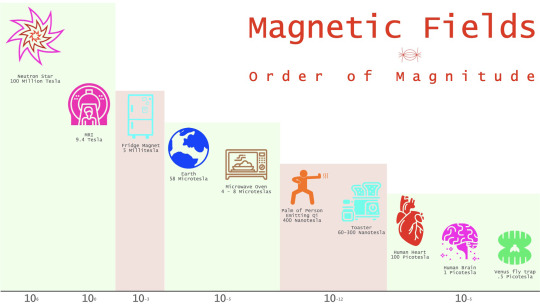
Image: Thobey Campion
Some perspective on scale:
• A toaster’s magnetic field is 300,000 times more powerful than the human brain’s field
• The Earth’s magnetic field is 2,000 times more powerful than a toaster’s field
• And a fridge magnet is 58 times more powerful than the Earth’s field
That makes the signal we just detected from a Venus flytrap almost exactly a billion times weaker than a fridge magnet, and explains why plant signals have flown under our radar for so long.
In the 1960s, though, a new class of magnetic field sensor showed up on the scene. It could detect weak biomagnetic fields, from a human brain and potentially even a plant. Behold…
The Superconducting Quantum Interference Device (SQUID)
SQUIDs are sensitive magnetometers used to measure extremely subtle fluxes in the magnetic field. The magneto-sensitivity of SQUIDs gives them extraordinary powers for recognizing the world around us. They represent the closest our technology has come to being psychic.
The hero feature of a SQUID is the Josephson junction. It's composed of two superconductors separated by a super-thin insulating material, usually copper.
The device gets inserted into a -346 Fahrenheit bath (usually nitrogen or helium). This cools the SQUID down to superconducting temperatures. The bath sits in a lead container, both of which also shield the SQUID from other magnetic fields which, in their ubiquity, are a real nuisance for detecting subtle magnetic field changes.
Any electrons passing through the junction demonstrate quantum interference, which then gets run through an algorithm and spits out a magnetic field reading.

Image: Thobey Campion
The list of applications for SQUIDs in defense, geophysics, space exploration and beyond is currently exploding with possibilities even decades after the device first showed up on the scene.
To give a sense of the power of the SQUID: mining company Outer-Rim Developments in Australia used a SQUID to measure ground surface electrical connectivity, successfully identifying a silver deposit two kilometers below the Earth’s crust. It’s the largest found anywhere ever, worth about $2 billion.
In 2017, researchers at the Shanghai Institute of Microsystem and Information Technology also developed a SQUID array that can detect a submarine magnetic field from an outlandish six kilometers away. It can also effectively time travel, identifying a submarine’s magnetized particle "wake" as much as two weeks after the fact.
And now, SQUIDs have initiated a potential quantum shift in our relationship with plants.

Image: Anne Fabricant
The experiment
The Venus flytrap boasts three trigger hairs that serve as mechanosensors. When a prey insect touches a trigger hair, an Action Potential is generated and travels along both trap lobes. If a second touch-induced Action Potential is fired within 30 seconds, the energy stored in the open trap is released and the capture organ closes. This is the plant-insect equivalent of a repeat offender. Imprisonment ensues.
Crucial to making these findings was the fact that this electrical activity doesn’t carry into the stalk of traps, which allowed the researchers to isolate the lobe by slicing it from the rest of the plant. Biologically intact, it was then placed on to a sensor.
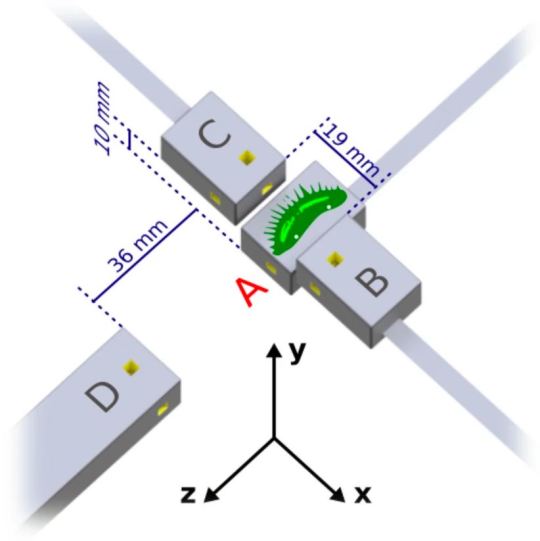
The size and biology of a plant cell pose all sorts of regional challenges for magnetic field sensing. To tackle the challenge the researchers needed:
• A diverse team from Johannes Gutenberg University Mainz (JGU), the Helmholtz Institute Mainz (HIM), the Biocenter of Julius-Maximilians-Universität of Würzburg (JMU), and the Physikalisch-Technische Bundesanstalt (PTB) in Berlin, Germany's national meteorology institute.
• Heat stimulation to trigger Action Potentials in the fly trap because thermal energy emits zero background noise.
• A custom sensor consisting of a vapor-filled glass cell that further suppressed noise.
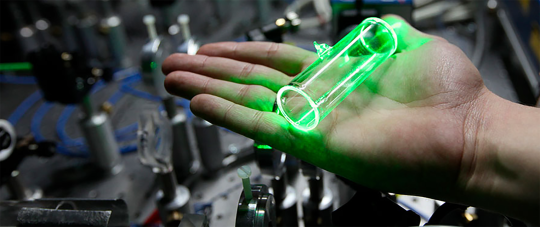
Image: UW/Mateusz Mzelanik
• Additional sensors placed around the room to differentiate any plant signals from environmental noise.
• An optically pumped magnetometer, as opposed to cryogenic cooling, which can be miniaturized and also prevented the plant matter from freezing.
The readings returned pretty much identical results four times in a row.

The discovery is as huge for biomagnetism in plants as it is for electro-physiology in general. We now have proof of a pathway for long-distance signal propagation between plant cells. Talk amongst your cells.
Both signal a new era of understanding plant systems we are only just coming to grips with.
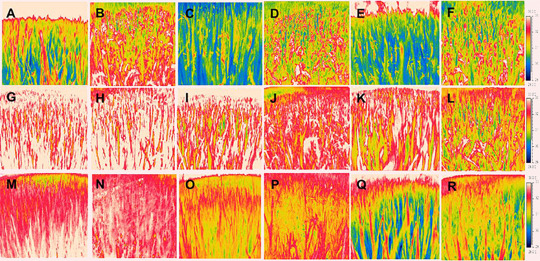
A 2017 study published in 'Frontiers in Plant Science' looked at the photosynthetic properties of pale green leaf rice. Image: Gu, et. al.
Now what?
The report’s introduction ponders, “in the future, magnetometry may be used to study long-distance electrical signaling in a variety of plant species, and to develop noninvasive diagnostics of plant stress and disease.”
With the help of this current research, crops could be scanned for temperature shifts, chemical changes, or pests without having to damage the plants themselves.
But that’s tomorrow, and we are unfortunately fastened firmly to today.
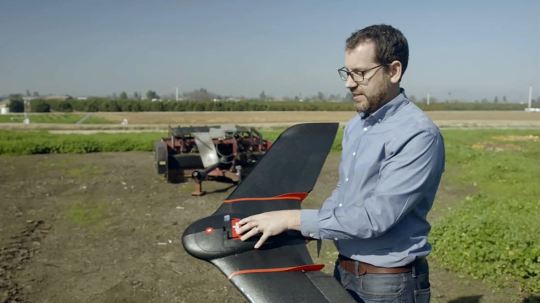
Image: Motherboard
To get a sense of the bigger picture, I spoke with Greg Crutsinger, Director of Applied Research at GeoAcuity. Motherboard highlighted his work in turning consumer drones into high-precision crop monitoring tools a few years ago. His efforts allow farmers to rapidly and repeatedly monitor the health of their plants from the sky, identifying which areas of land need more water or fertilizer.
Our conversation exhibited a common refrain. Before widespread application of this new sensory technology, our species needs to first open our minds to a hidden electromagnetic network.
“We’re so biased by human eyes," Crutsinger said. "Yesterday I was going through some of the microsatellites that are going to scan the Earth with radar. We’re looking at different wavelengths and how they can measure moisture in plants by how deep the radar penetrates into corn. I look at the world in different spectrums now and different scales. This is similar. It’s just at this fine scale we haven’t thought of yet.”
Beyond the perceptual, there are daunting practical considerations. Lab settings provide a convenient vacuum where these almost-imperceptible magnetic fields can be measured without getting drowned out. Greg was clear about the challenges of packing up this gear and heading out into the world.
“Typically what we’re thinking about when we’re in plant magnetic spectrums is imagery and light: how are they interacting with wavelengths beyond the scope of the human eye? We can pretty easily use different sensors for that," he explained. "The challenge is mechanical, trying to measure it, and understanding what it means at such a fine level.”
Obstacles aside, new advances contain huge promise for understanding the staggering amount of data we’ve been looking past.
“I have a drone that I just picked up from Best Buy and did a 3D model with over lunch. The potential is moving very quickly to miniaturize a lot of these capabilities,” said Crutsinger. “As we advance the sensitivity of these tools and more people start using them and not just two labs in the world, I think they’ll start becoming more commonplace in terms of adoption.”
Perhaps our best next step is looking at how other species interact with these magnetic fields. Since these fields exist, they may serve some practical purpose. “Plants and insects have co-evolved for millions of years,” explained Crutsinger. “The trap is getting prey. But insects could leverage that to their own benefit as well. They’re super sensitive and they have antennas. How might they cue in on the magnetic fields of the plant. It’s just also something we have to pay attention to.”
It’s at once discouraging and hopeful to consider the vastness of what we can’t perceive. Perhaps human consciousness is not so much defined by knowing that we know but by acknowledging what we do not.
Either way, it’s a heck of a day for plant nerds.
Thobey Campion is the former Publisher of Motherboard. You can subscribe to his Substack here.
Venus Flytraps Have Magnetic Fields Like the Human Brain syndicated from https://triviaqaweb.wordpress.com/feed/
0 notes
Text
Revised summer to-do list.

Thaaaaaaaaaat's right, sports fans, I am still alive and kicking!
(I'm not sure how well I'm doing. I'm probably a couple bad days away from going completely insane. But ya know. It's fine.)
I am now t minus five weeks away from heading back to Harrisonburg for a new school year (fingers crossed people are responsible so we can stay, face masks and all), and I figured it might be a good time to revise my summer to-do list. My last one was too general, I think. This one, however, will cover specific projects I want to complete.
1. Finish revising my paper from last semester's theory seminar. (I want to submit it the JMU's undergrad research journal in the fall, and I still have a teeny bit of research left to do.)
2. Keep working on audition excerpts for jazz ensemble auditions. (They just got posted this week, and they were h a r d to count out loud.)
3. Complete the Recital Attendance requirement. (Due to COVID, all we have to do to complete the requirement is watch five half-hour plus concerts and write short reflections on each. I could get this knocked out before school even starts!)
4. Write a piece for the Renee B. Fisher competition. (This is a competition for child pianists, and they commission new music for the competition every year. I really want to win this one because new music for young pianists is something I'm really passionate about.)
5. Finish at least one movement of a piece about the sun. (It involves strings, wood blocks, possibly a gong and an oboe, and perhaps a rearranged viola part. At the same time, I like the viola part I have now and I don't really want to mess with it.)
6. Try to start either memorizing or speeding up one of my piano pieces. (I've worked on them over the summer, but I don't think any of them are up to tempo.)
7. I would REALLY like to read some more books. (I've completed one out of the pile I had at the beginning of the summer. ONE.)
So there you have it! I've got five weeks -- I think I can probably take a week and knock out Recital Attendance, and if I just sat down and booted up my computer, I could probably at the very least get the supplemental research for my paper done in a week as well.
Now let's just see how motivated I am, shall we?
#amy rambles#amy's to-do list#jazz#recital attendance#composition#piano#i think i could get a vast majority of this new goals-oriented list complete by the time school starts again#you know#if i try
1 note
·
View note
Photo



Today is annual GIS Day!
To celebrate, we look back on CISR GIS projects in collaboration with the JMU Geographic Science Program in JMU Integrated Science and Technology. From 2015–2018, CISR conducted multiple innovative GIS and mapping services for the humanitarian mine action community, sponsored by the U.S. Department of State. Faculty and students from CISR and JMU assisted organizations in Vietnam with GIS software to conduct spatial analysis of casualty data, and prioritization of survey and clearance work.
#gis#geographic information sciences#geographic information science#science#technology#landmines#mine action#cisr#the center for international stabilization and recovery#center for international stabilization and recovery#jmu#james madison university#isat#jmu isat#jmu geography#jmu geographic science#jmu geographic sciences#jmu geographic science program#integrated science and technology#jmu integrated science and technology#paul rittenhouse#suzanne fiederlein#kaiti burger#project renew#project renew vietnam#vietnam#quang tri province#quang tri#vietnamese#the vietam war
0 notes
Photo



The scenario for my campaign that I have chosen is scenario #3. This scenario is aBudweiser’s sports-themed, promotional campaign: With anticipation growing across the globe for the upcoming 2014 FIFA World Cup Brazil™, Budweiserrevealed Rise As One, the brand's global creative campaign on behalf of its sponsorship of the upcoming tournament. Budweiser has a strong commitment to football globally, having served as official beer sponsor of the FIFA World Cup™ for over 25 years, and with an ongoing commitment through the 2018 and 2022 tournaments. You will use this sports-related theme for your campaign, but will create a culturally unique, country-specific promotional campaign for Budweiser.
The country I have chosen to focus my PR campaign on is Spain. I selected Spain because I was interested in focusing on a Spanish-speaking country. Through my time at JMU, I have learned a lot about Spain’s culture and I think it could come to good use in this project. I have chose this scenario for Spain because football (or what American’s call “soccer”) is the most popular sport there. It would be very interesting to create a campaign for the FIFA tournament since football is so important to Spaniards.
0 notes
Text
USA D@win Tour reflection

There are particular reflections and comments that I have carried with me from this trip:
In the tech run before the performance with JMU at Blue Ridge College, Shane O’Hara gave notes which rejuvenated the piece as I felt completely different performing it and the comments from audience members also displayed this.
Shane O’Hara’s notes:
To look distorted in the ‘fa-fa’ section like an old professor
Play and improvise more in the childlike plane section
Ensure that the ‘butterfly’ hand gestures are not lost and that the focus remains on the hand as we are intrigued by it
To not rush or preempt the sections
One comment from the audience after the performance being that I looked ‘old and awkward’ in the ‘fa-fa’ moments, which is what the choreographer wanted.
In the tech runs I found that at both universities the students say ‘thank you dark’ when the tech manager makes the room dark and warns by saying ’dark’ - possibly something to bring in next year as it felt well organised and a safe method of communication
A class at Shenandoah with Matt Burdo was my favourite. He spoke about the anatomy of the body and how to look after it properly which is an aspect of dance that I like to focus on. His class reminded me of what I enjoy the most in performing and what I would like to take on possibly in my own company in the future
The class consisted of:
core strengthening on floor rolling and leg swings
barre work on the floor (which was the 2nd time have tried this and found it really works the legs)
use of head and spiralling
use of breath
live music- drums and percussion
I was reminded of the different ways of teaching such as being in the jazz classes with the teacher raising their voice however barely having to say anything to give the dancers direction. Contrastingly, in the modern classes the movements were spoken through to show the dynamics required through the use of voice. Both used repetition as a way to teach and for each dancer to get an opportunity to try the movement phrases. I find that I can work in both ways and they access different ways of using the body and thinking about the body. The styles make you feel specific ways and give you new differing challenges.
When at the universities performing, I was also able to help much more with the tech due to the time we had to set up.

Using the equipment at Shenandoah, the projections were upon large book like screens unlike our other performances. The choreographer Christopher Mathews particularly liked this. I thought it looked more like a fairytale story book which is appropriate to the theme of the dance.

Both universities had very large performance spaces which we did agree made each piece feel different however this was a positive as we could use the full space and perform each action to the full capacity.

The whole trip was extremely well organised and the performances and classes very enjoyable and successful. Being our final full show performance as the D@win cohort, it proved to be an exciting and emotional one.
0 notes